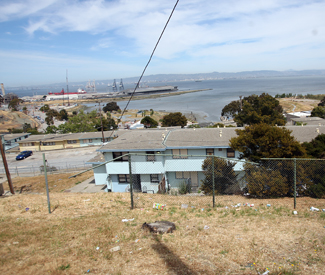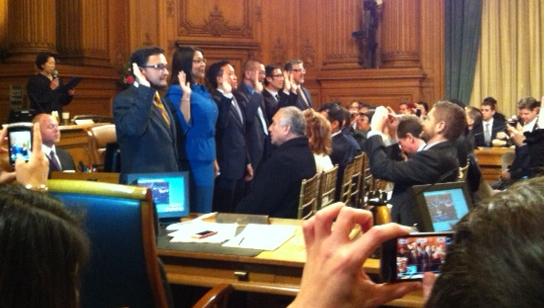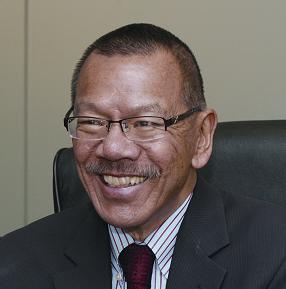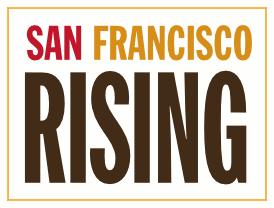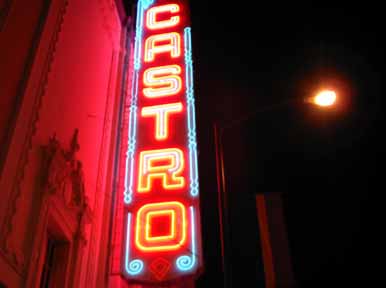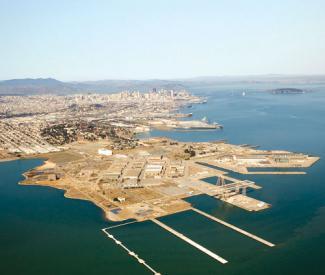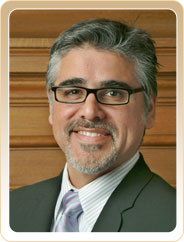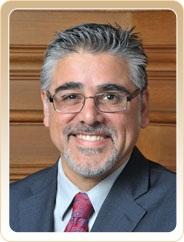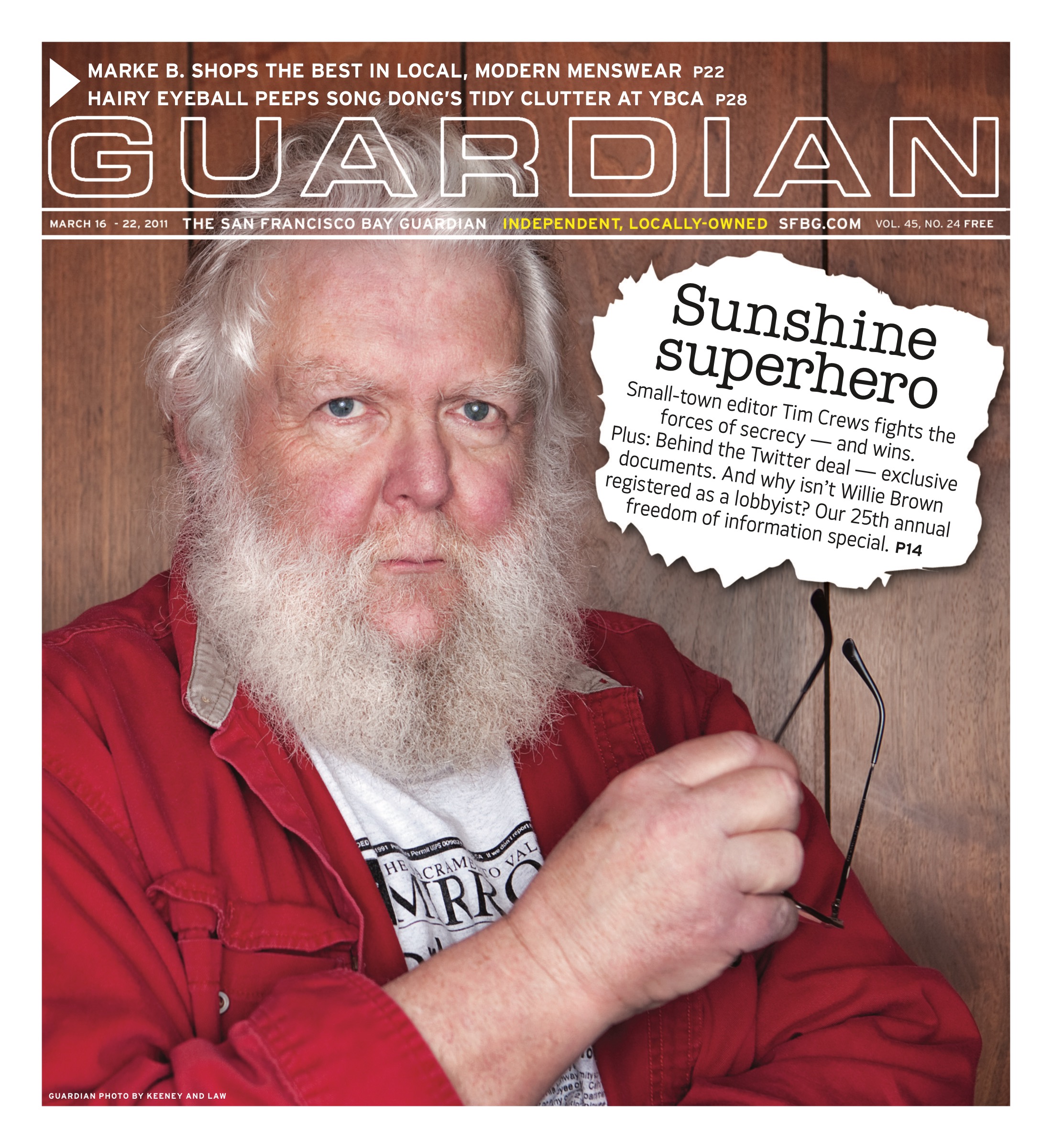news@sfbg.com
The route to Wine Country was chock-full of gamblers on Nov. 5. They came in cars and limos. And they came on buses, just like hundreds of San Franciscans do every evening, many of them older Asian and Latino immigrants hoping to win big — or at least enjoy a diversion and a few free drinks.
But this day was a little different. It was the grand opening of Graton Resort & Casino, which is closer to San Francisco than the other casinos, both in distance and in its pro-labor progressive values.
Normally, Northern California tribes and even Harrah’s in Reno pay private bus companies to bring Bay Area customers to their doors. Graton hasn’t contracted these services yet, but the buses came anyway.
“Graton’s not paying us,” said Rocio Medrano, coordinator at Kenny Express, which planned to send three buses from Mission and 15th streets — where buses to various casinos line up every evening — to the opening. “But we had to go. Everyone was so excited.”
FADA Tours, which leaves from Kearny and Sacramento streets, sent six buses, every seat sold out in advance. Xin Jing Service dispatched three buses from downtown Oakland. Walter Wooden, a driver at Xin Jing, gave the same reason for the not-so-chartered bus service as Medrano: “The people want to go.”
Graton’s counting on it. California’s newest casino has steep profit projections, based largely on its proximity to the Bay Area. “Winning Just Got Closer,” Graton’s homepage screams. Next to the purple slogan, a map shows directions from San Francisco to the casino’s Rohnert Park address.
Odds are, most of the estimated 10,000 people who are swarming Graton in its opening days didn’t take home much winnings. But for a 1,300-person Native American tribe, and an Oakland-based labor union, winning really just got closer.
RARE UNION CASINOS
“Graton is very important,” said Marty Bennett, research and policy analyst at UNITE HERE Local 2850. “Now that it’s open, our organizing drive will begin soon.”
The 2,000-member local represents food service, hotel, and gaming workers, mostly in the East Bay. In a recent campaign, it organized a strike of 180 food service workers at Oakland International Airport. Its only current North Bay location is the Petaluma Sheraton, but Graton is poised to become its newest shop.
The likely unionization of Graton stems from an agreement signed in 2003 by Local 2850 and the tribal chairman who made Graton happen, Greg Sarris. The agreement guarantees card check neutrality, the union’s preferred way of organizing.
The other path to unionization is a secret ballot election overseen by the National Labor Relations Board (NLRB). But these elections are generally announced months before their dates, and notoriously offer a window of time for management to harass and intimidate workers.
The difference between card check and secret ballots is “night and day,” according to Wei-Ling Huber, president of Local 2850.
“It’s not even close. In a secret ballot election that’s run by the NLRB, about 50 percent of all organizing drives include termination of organizers,” Huber said.
If Graton workers vote to unionize with a card check, it could grow Local 2850’s 2,000-person membership by more than 50 percent. Huber said that about 1,200 of Graton’s 2,200 workers have jobs that would be represented by UNITE HERE, including bartenders, servers, and cleaning staff.
“It’s incredibly exciting,” Huber said. “The office is definitely abuzz.”
So is the Las Vegas office of Station Casinos. Members of the Federated Indians of Graton Rancheria own the casino, but Station has the contract to manage it. And it’s a lucrative property. Graton is projected to bring in $300 to $400 million in its first year.
Station spokesperson Lori Nelson told us by email the company is “excited to welcome residents from the Bay Area as we invite them all out to check out the newest entertainment destination created just for them.”
Nelson emphasized that Graton is targeting Bay Area customers.
“In fact, our advertising campaign that’s been on the air and on billboards the past few weeks even reads ‘From Bay to Play in 43 Minutes,'” Nelson wrote.
That “43 minutes” can be more like a couple hours on traffic congested days such as opening day. But increased congestion aside, Graton’s location 50 miles from San Francisco is a jackpot for Station. It was also key to the leverage Sarris had when he hired Station to manage Graton, using that leverage to require a worker-friendly operation.
When Sarris was looking to hire a management company, he invited representatives from the many interested firms to his living room, pitting them against each other.
“I did create what I like to call a cock fight,” Sarris tells us.
Sarris’ conditions were audacious. He wanted full tribal control of the development board, a LEED-certified green building, and $200 million upfront. But the condition that made most companies back down, he said, was his demand for living wages and benefits right off the bat, and the option for workers to unionize once the casino opened.
“The union thing was a deal breaker for everyone else. Station even had a problem with it,” Sarris said. “But it was my way or the highway on that one.”
RIPPLE EFFECT?
In Las Vegas, Culinary Union Local 226 — a UNITE HERE affiliate — has been waging a campaign against Station since 2010. Its website devoted to Station workers’ struggle includes a list of 88 instances of alleged unfair labor practices committed by Station and calls the company called “rabidly anti-union.”
But in Rohnert Park, UNITE HERE and Station have been working together.
“We’re optimistic that our relationship here can be very different,” said Huber. “I think that the tribe has had a really positive influence on bringing us together in California in a way that is not the case in Las Vegas.”
At Sarris’ urging, the casino was built with 100 percent union labor. It created about 700 jobs. And Jack Buckhorn, president of the North Bay Labor Council, said that 75 percent of people hired to build Graton were Sonoma County residents.
“These were long-term jobs. It really helped out as we’re recovering from this great recession,” Buckhorn said. “These were all really good jobs.”
That 75 percent local hire rate is impressive compared to some construction projects with similar price tags in San Francisco. After neighborhood activism, the $1.5 billion UCSF Mission Bay Hospital has maintained a rate of 20 percent local hire. And the Golden State Warriors have been praised for its promise of 25 percent local hire for construction of its proposed arena on Piers 30-32.
Sarris says that his commitment to good working conditions at Graton is rooted in history.
“I believe in dignity in the workplace,” Sarris said. “Let’s not forget the way we labored in kitchens and fields with low wages and no benefits.”
Workers’ rights are just one part of the vision Graton’s tribal council has for the casino, which also includes a bevy of social programs, more than $25 million annually for parks and open spaces in Sonoma County, and an organic farm.
“We see Graton as a means to an end,” said Joanne Campbell, a 12-year tribal council member.
With Graton’s opening, Sarris isn’t just the leader of a tribe that’s about to get rich. He has influence in Sonoma County, and he says he intends to use it to fight injustice.
The Oct. 22 death of 13-year-old Santa Rosa boy Andy Lopez at the hands of Sonoma County Sheriff’s Deputy Erick Gelhaus sparked weeks of protests in Santa Rosa, including a march Oct. 29 attended by hundreds from the East Bay and San Francisco.
“There was a 13-year old boy who was just shot up here. We now have the power to put people in and out of office, and we will,” Sarris said in a conversation last week. He declined to specify which officials might be a target of such a campaign, but said that “it’s not just police and sheriffs, it’s elected officials.”
“We can elect a spotted Chihuahua into office if we want,” Sarris said. “Look at all the money we’re going to have.”
KEEPING THE TURKEY
Sarris reiterated those ideas at a Nov. 3 meeting of the North Bay Organizing Project that was focused on Lopez. He then presented Lopez’s family with a check for $8,000.
“From day one, the only reason I got into it is to create something here that will benefit Indian and non-Indian alike,” Sarris said. “I’m especially concerned about people of color.”
After the genocide of Native Americans and centuries of oppression that followed, getting wealth back into indigenous communities is a complicated task. And with Graton, Sarris may achieve it for a tribe made up of descendants of those who first populated Novato, Marshall, Tomales, San Rafael, Petaluma, Bodega, and Sebastopol.
“It’s Thanksgiving again. But this time, we’re keeping the turkey,” Sarris said. “We’ll share it, but we’re keeping it.”
The people slogging up 101 this week were financing more than a glitzy new casino. Graton’s profits could fund serious progressive causes in Sonoma County. But first, its Bay Area customers will need to empty their pockets.
Someone has to lose for the house to win. Which demographics will most frequent Graton remains to be seen. One indication could be the clientele of Kenny Express.
“The seniors that are retired, they go on a daily basis. We also have people who work during the day and take the bus at night,” Medrano said. “They’re mostly Filipino, Hispanic, Chinese.”

